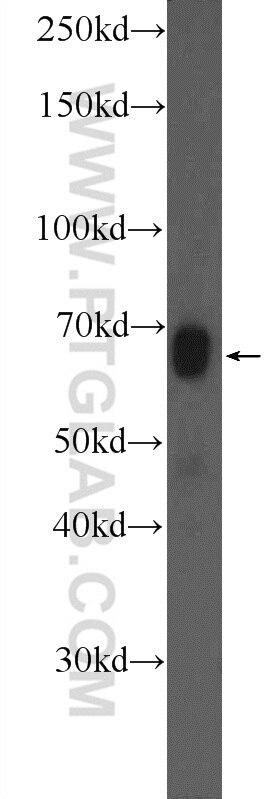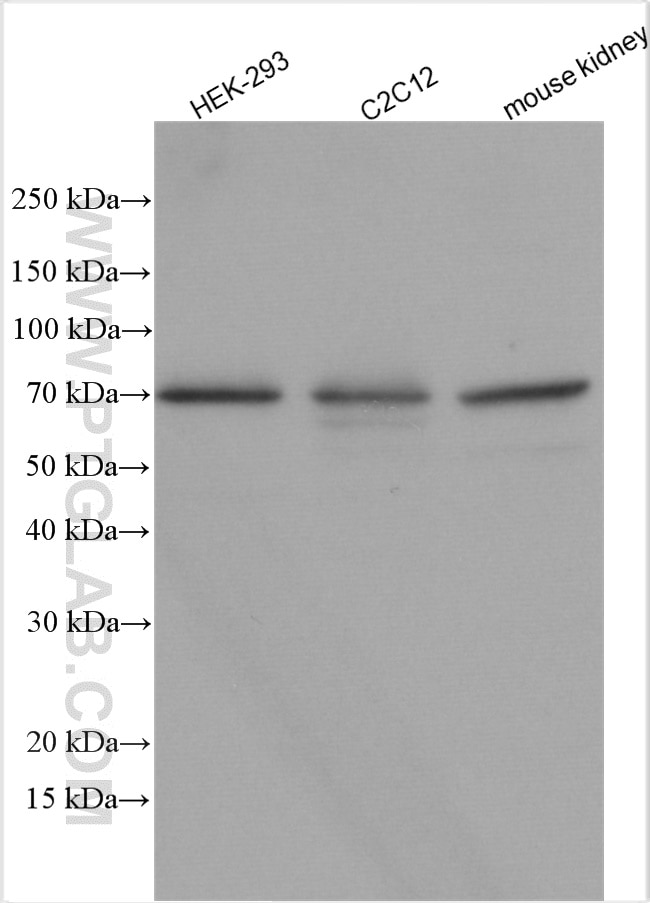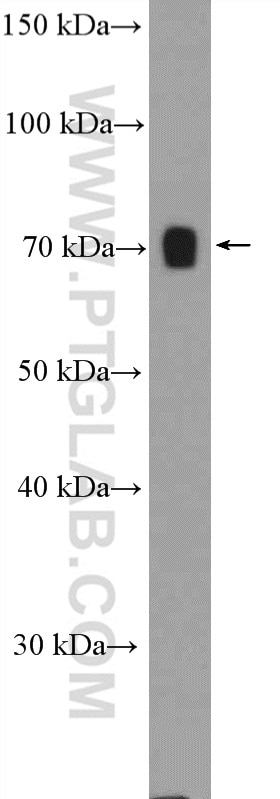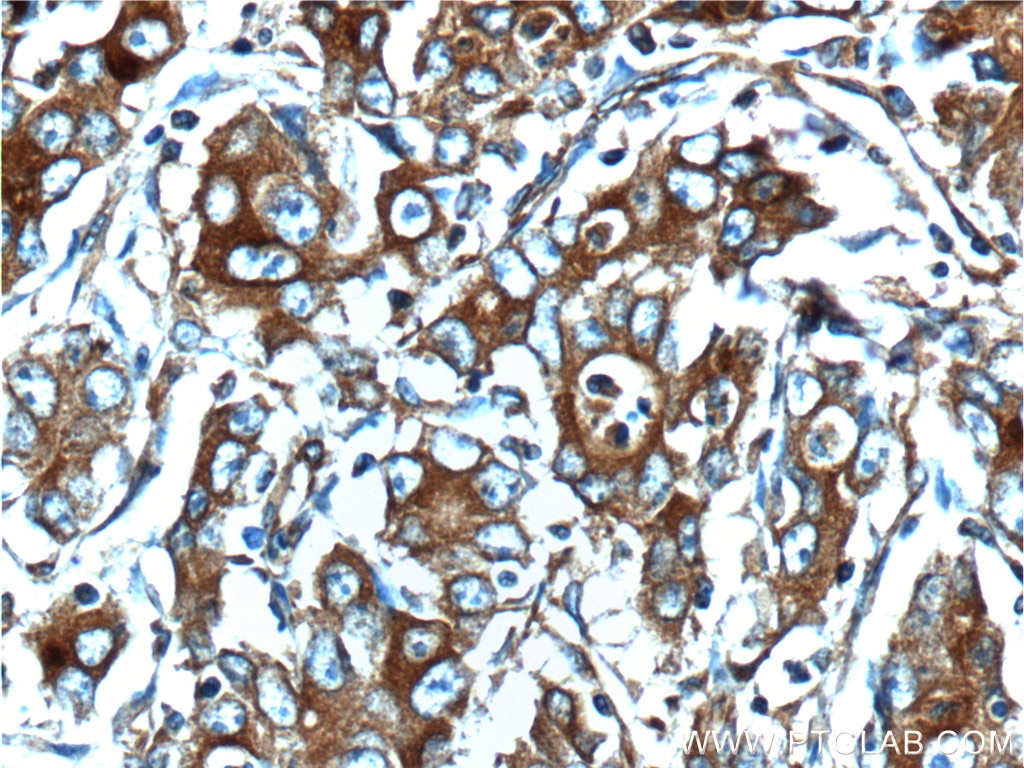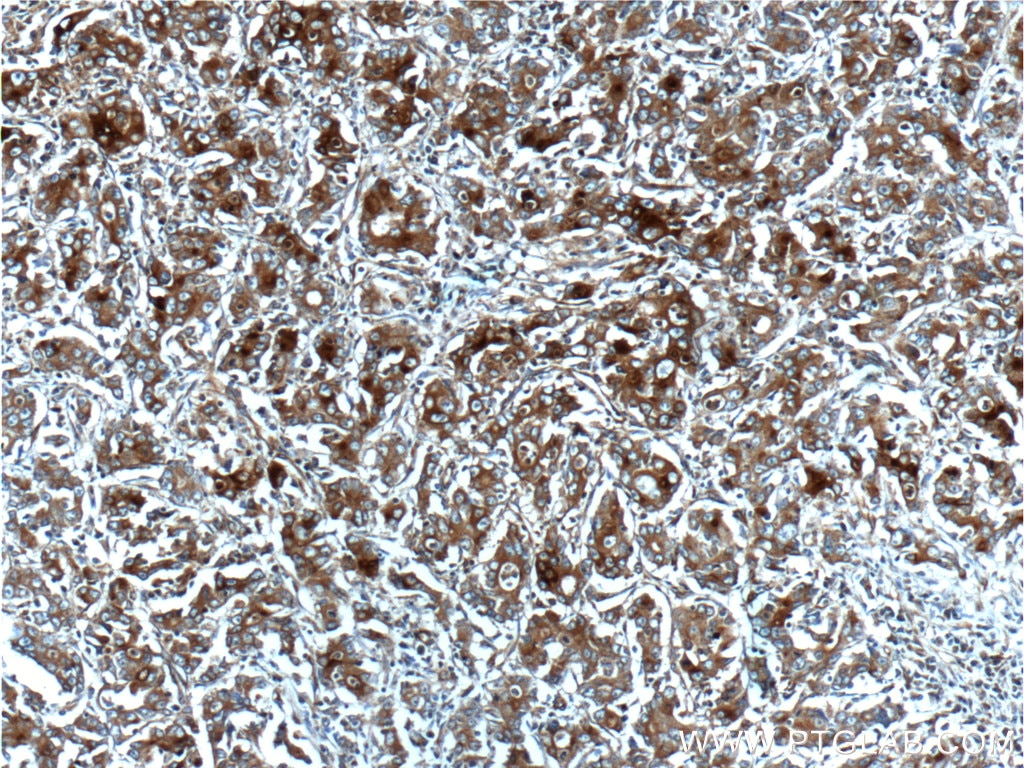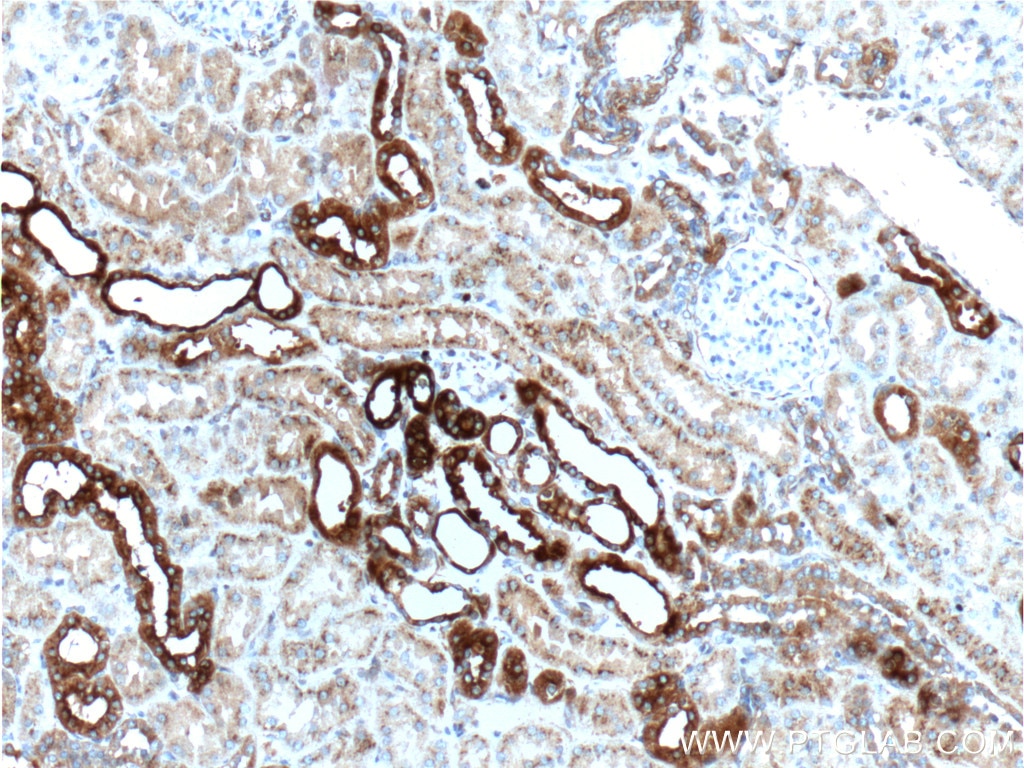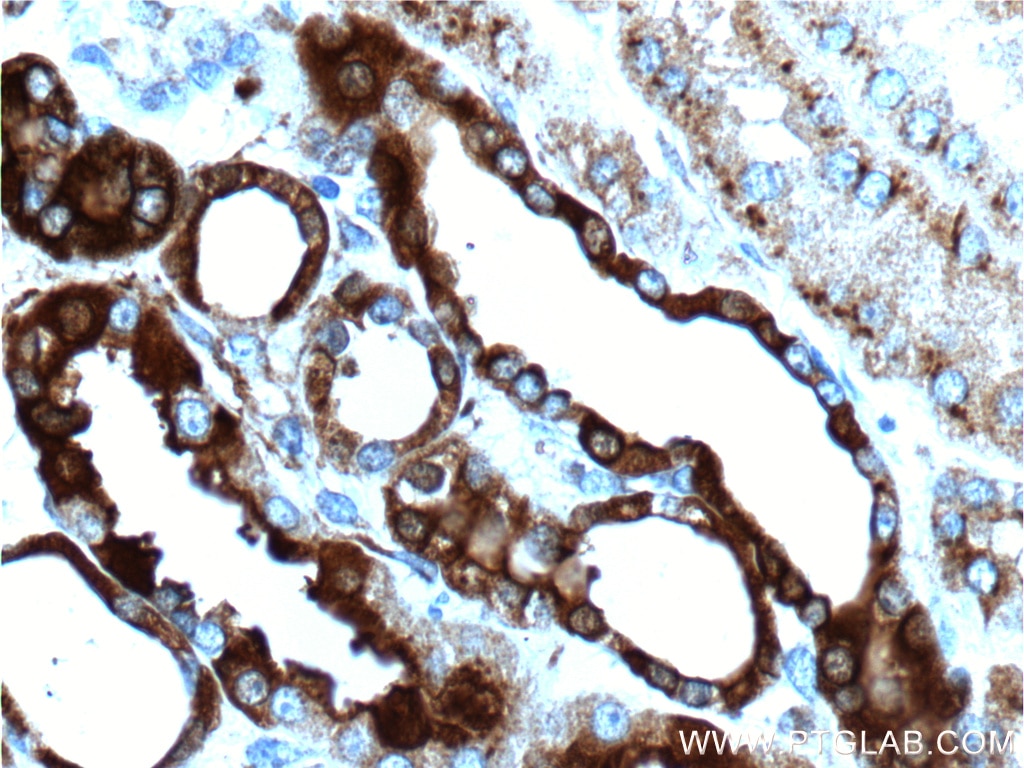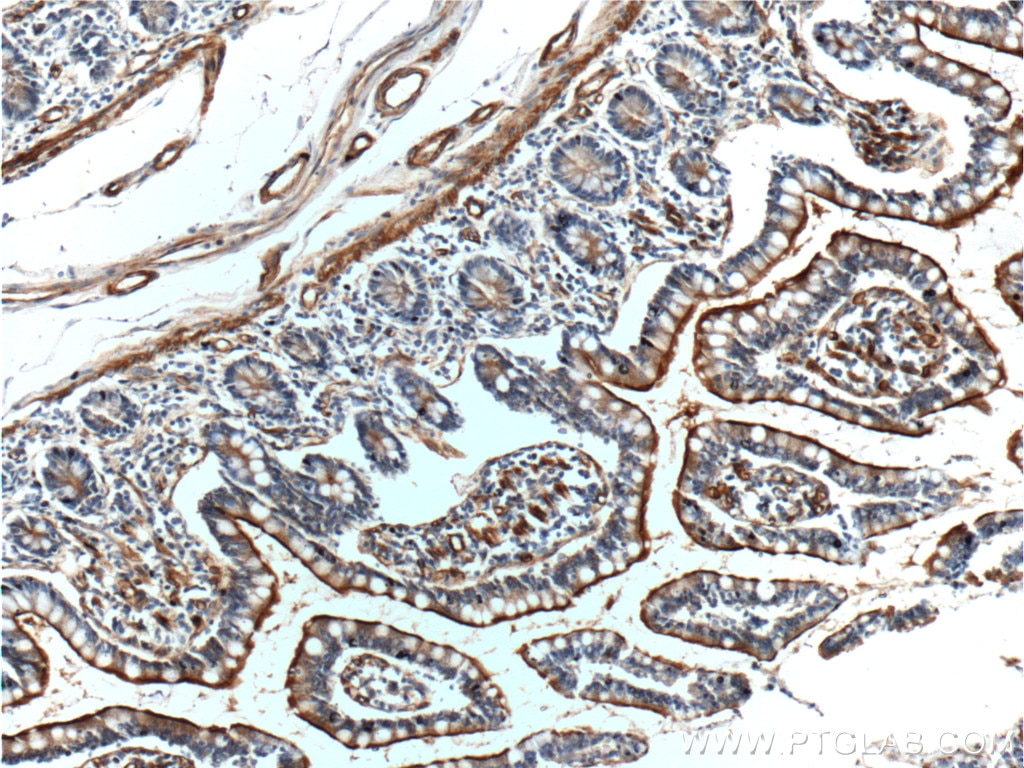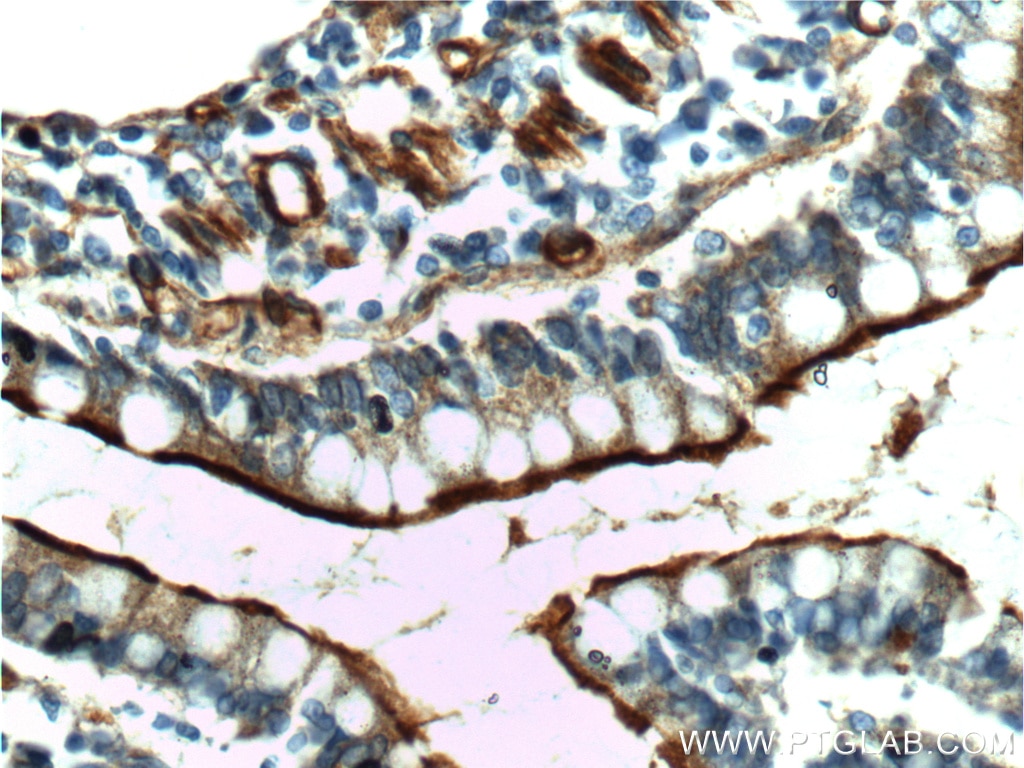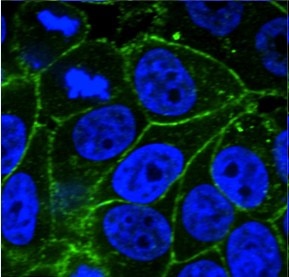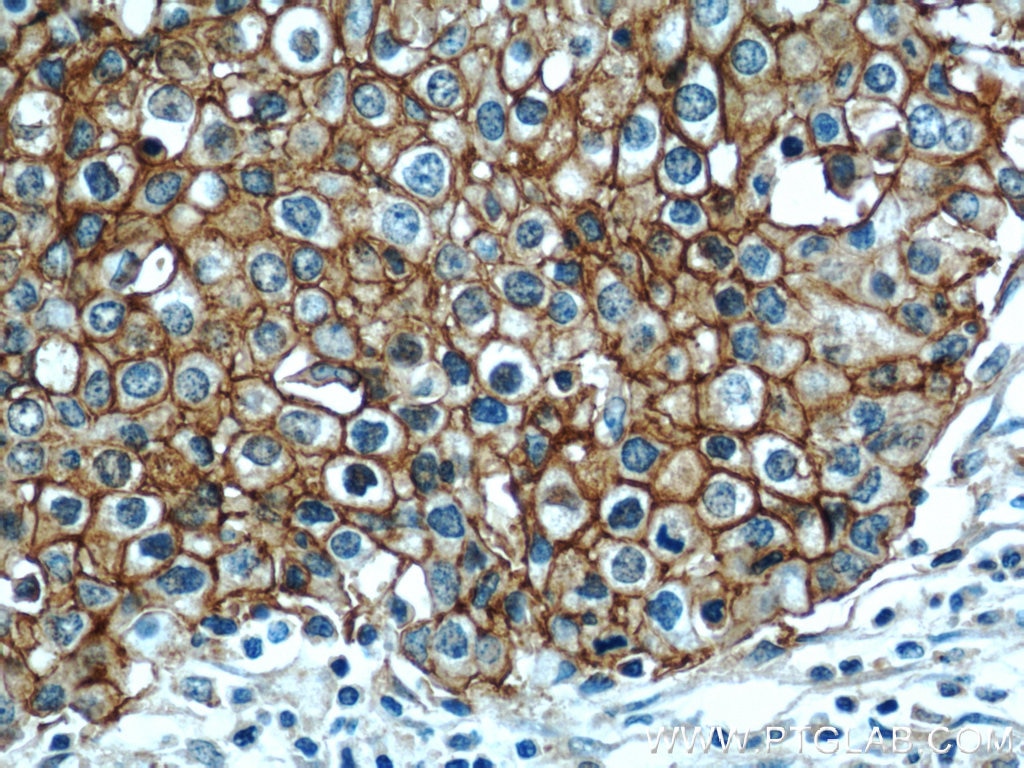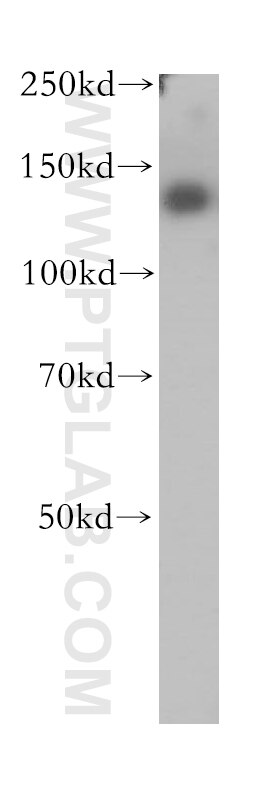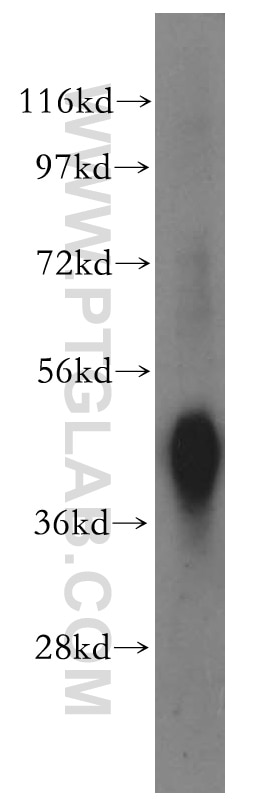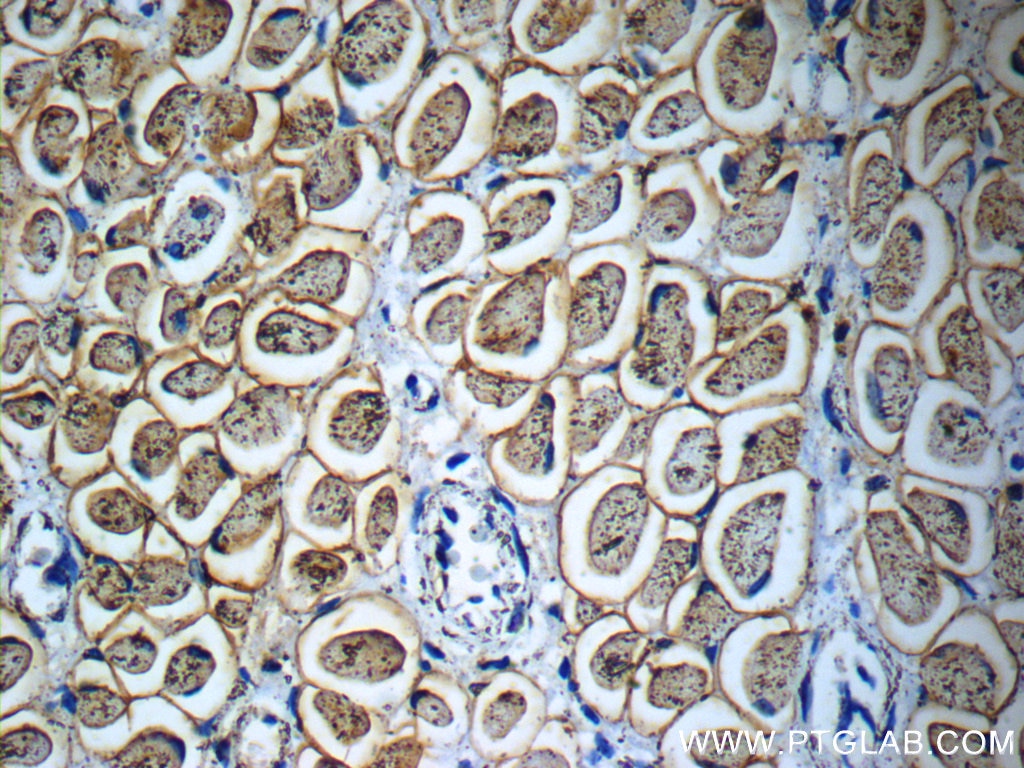Anticorps Polyclonal de lapin anti-Osteopontin
Osteopontin Polyclonal Antibody for IHC, WB, ELISA
Hôte / Isotype
Lapin / IgG
Réactivité testée
Humain, rat, souris
Applications
WB, IHC, IF, ELISA
Conjugaison
Non conjugué
N° de cat : 25715-1-AP
Synonymes
Galerie de données de validation
Applications testées
| Résultats positifs en WB | tissu rénal de souris, cellules C2C12, cellules HEK-293, HEK-293, tissu rénal de rat |
| Résultats positifs en IHC | tissu de cancer de l'estomac humain, tissu d'intestin grêle humain, tissu rénal humain il est suggéré de démasquer l'antigène avec un tampon de TE buffer pH 9.0; (*) À défaut, 'le démasquage de l'antigène peut être 'effectué avec un tampon citrate pH 6,0. |
Dilution recommandée
| Application | Dilution |
|---|---|
| Western Blot (WB) | WB : 1:500-1:1000 |
| Immunohistochimie (IHC) | IHC : 1:50-1:500 |
| It is recommended that this reagent should be titrated in each testing system to obtain optimal results. | |
| Sample-dependent, check data in validation data gallery | |
Applications publiées
| WB | See 16 publications below |
| IHC | See 10 publications below |
| IF | See 1 publications below |
Informations sur le produit
25715-1-AP cible Osteopontin dans les applications de WB, IHC, IF, ELISA et montre une réactivité avec des échantillons Humain, rat, souris
| Réactivité | Humain, rat, souris |
| Réactivité citée | rat, Humain, souris |
| Hôte / Isotype | Lapin / IgG |
| Clonalité | Polyclonal |
| Type | Anticorps |
| Immunogène | Osteopontin Protéine recombinante Ag22588 |
| Nom complet | secreted phosphoprotein 1 |
| Masse moléculaire calculée | 314 aa, 35 kDa |
| Poids moléculaire observé | 66 kDa |
| Numéro d’acquisition GenBank | BC007016 |
| Symbole du gène | SPP1 |
| Identification du gène (NCBI) | 6696 |
| Conjugaison | Non conjugué |
| Forme | Liquide |
| Méthode de purification | Purification par affinité contre l'antigène |
| Tampon de stockage | PBS avec azoture de sodium à 0,02 % et glycérol à 50 % pH 7,3 |
| Conditions de stockage | Stocker à -20°C. Stable pendant un an après l'expédition. L'aliquotage n'est pas nécessaire pour le stockage à -20oC Les 20ul contiennent 0,1% de BSA. |
Informations générales
Osteopontin (OPN), also known as SPP1, is a secreted glycophosphoprotein that belongs to the small integrin-binding ligand N-linked glycoprotein (SIBLING) family. Originally isolated from bone, OPN has been found in kidney, vascular tissues, biological fluids, and various tumor tissues (PMID: 15138464; 16406521). OPN can interact with CD44 and integrins and regulate diverse biological processes. It has a multifaceted role in bone development and remodeling, and is also involved in the inflammatory and immune response, oncogenesis and cancer progression. The very acidic nature of OPN, as well as the presence of variable posttranslational modifications, has led to anomalous migration in SDS-polyacrylamide gels and therefore to reports of different molecular weights for OPN (PMID: 8293561). Depending on the cell and tissue source and/or the SDS-PAGE system, OPN migrates with a molecular weight of 44-80 kDa, as well as at some smaller bands correspond to peptide fragments (PMID: 8195113; 17890765).
Protocole
| Product Specific Protocols | |
|---|---|
| WB protocol for Osteopontin antibody 25715-1-AP | Download protocol |
| IHC protocol for Osteopontin antibody 25715-1-AP | Download protocol |
| Standard Protocols | |
|---|---|
| Click here to view our Standard Protocols |
Publications
| Species | Application | Title |
|---|---|---|
Nat Neurosci Microglia and macrophages promote corralling, wound compaction and recovery after spinal cord injury via Plexin-B2. | ||
Sci Adv Diversified transcriptional responses of myeloid and glial cells in spinal cord injury shaped by HDAC3 activity. | ||
Part Fibre Toxicol Aryl hydrocarbon receptor activation-mediated vascular toxicity of ambient fine particulate matter: contribution of polycyclic aromatic hydrocarbons and osteopontin as a biomarker. | ||
Cell Mol Life Sci Metastasis suppressor 1 controls osteoblast differentiation and bone homeostasis through regulating Src-Wnt/β-catenin signaling. | ||
Clin Transl Immunology Deficient DNASE1L3 facilitates neutrophil extracellular traps-induced invasion via cyclic GMP-AMP synthase and the non-canonical NF-κB pathway in diabetic hepatocellular carcinoma. | ||
Stem Cells High-mobility group AT-Hook 1 mediates the role of nuclear factor I/X in osteogenic differentiation through activating canonical Wnt signaling. |
Avis
The reviews below have been submitted by verified Proteintech customers who received an incentive forproviding their feedback.
FH Eli (Verified Customer) (01-31-2020) | Loaded 20 (lanes 2 and 3) , 10 (lanes 4 and 5), 5 (lanes 6 and 7), and 2.5 (lanes 8 and 9) ug of cell lysates to the lanes listed.
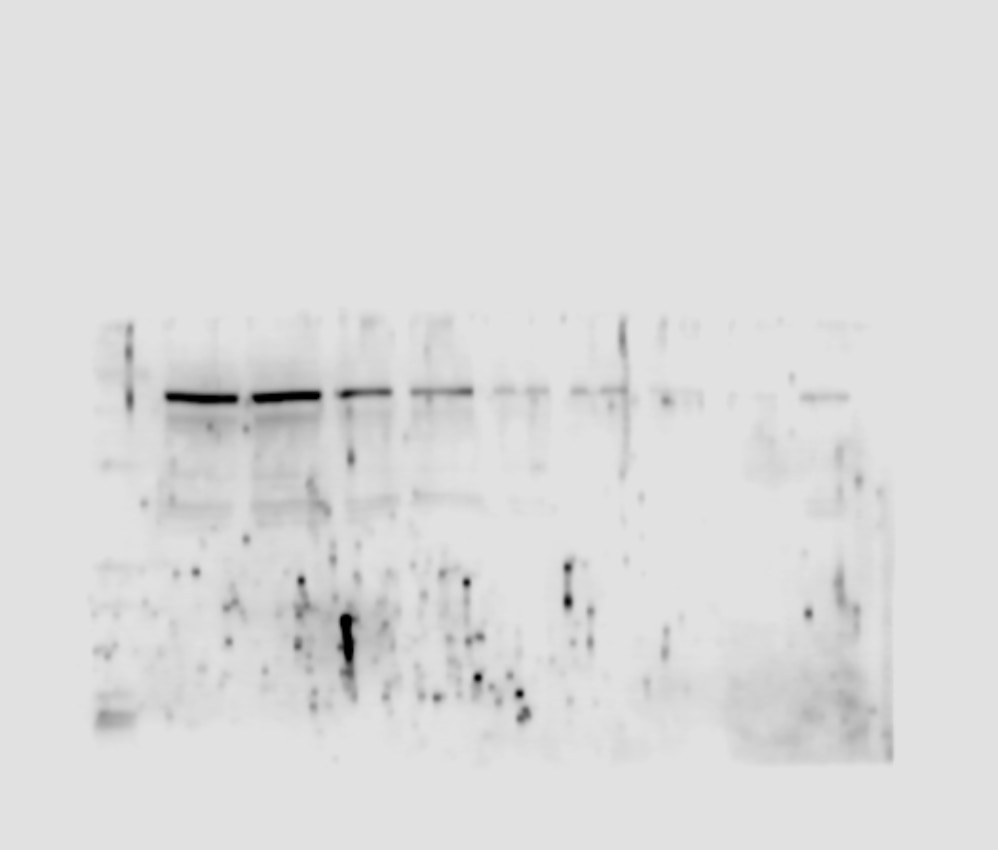 |
